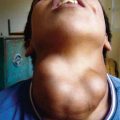Chapter 172 Infection Associated with Medical Devices
Intravascular Access Devices
Cerebrospinal Fluid Shunts
The usual meningeal pathogens, Streptococcus pneumoniae, Neisseria meningitidis, and Haemophilus influenzae type b, can also cause bacterial meningitis in patients with shunts in place. The clinical presentation is similar to that for acute bacterial meningitis (Chapter 595.1).
Barberán J. Management of infections of osteoarticular prosthesis. Clin Microbiol Infect. 2006;12:93-101.
McGirt MJ, Zaas A, Fuchs HE, et al. Risk factors for pediatric ventriculoperitoneal shunt infection and predictors of infectious pathogens. Clin Infect Dis. 2003;36:858-862.
Mermel LA, Allon M, Bouza E, et al. Clinical practice guidelines for the management of intravascular catheter-related infections: 2009 update by the Infectious Disease Society of America (IDSA). Clin Infect Dis. 2009;49:1-45.
O’Grady NP, Alexander M, Dellinger EP, et al. Guidelines for the prevention of intravascular catheter-related infections. Centers for Disease Control and Prevention. MMWR Recomm Rep. 2002;51(RR-10):1-29.
Ratilal B, Costa J, Sampaio C. Antibiotic prophylaxis for surgical introduction of intracranial ventricular shunts. Cochrane Database Syst Rev. 2006;3:CD005365.
Schreffler RT, Schreffler AJ, Wittler RR. Treatment of cerebrospinal fluid shunt infections: a decision analysis. Pediatr Infect Dis. 2002;21:632-636.
Tacconelli E, Carmeli Y, Aizer A, et al. Mupirocin prophylaxis to prevent Staphylococcus aureus infection in patients undergoing dialysis: a meta-analysis. Clin Infect Dis. 2003;37:1629-1638.
Timsit JF, Schwebel C, Bouadma L, et al. Chlorhexidine-impregnated sponges and less frequent dressing changes for prevention and catheter-related infections in critically ill adults. JAMA. 2009;301:1231-1240.
Tolzis P. Antibiotic lock technique to reduce central venous catheter-related bacteremia. Pediatr Infect Dis J. 2006;25:449-450.
Vinchon M, Dhellemmes P. Cerebrospinal fluid shunt infection: risk factors and long-term follow-up. Childs Nerv Syst. 2006;22:692-697.
Zimmerli WE, Trampuz A, Ochsner PE. Prosthetic-joint infections. N Engl J Med. 2004;351:1645-1654.

 of patients.
of patients.



